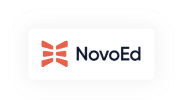Businesses have long utilized Learning Management Systems (LMSs). However, firm executives, learning specialists, and learners sensed something was missing as training requirements changed. A broad consensus was that a more diverse and active learning environment was necessary.

We have
something for you!
Are you still figuring out which LMS is the best? Grab the chance to explore the LMS Buyer's Guide and get started.






















